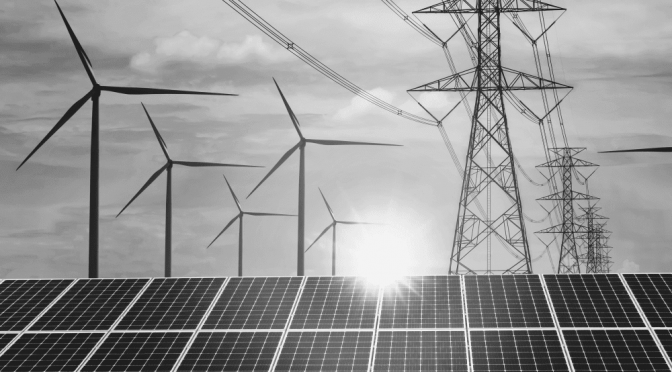
According to a review by the SUN DAY Campaign of data just released by the U.S. Energy Information Administration (EIA) and the Federal Energy Regulatory Commission (FERC), wind and solar combined now provide more generating capacity and produce more electricity than coal.
The latest issue of EIA’s “Electric Power Monthly” report (with data through February 28, 2023) reveals that in the first two months of this year, electrical generation by solar (including small-scale distributed systems) grew by 6.7%, compared to the same two-month period in 2022 – faster than any other energy source. This was driven in large part by growth in “estimated” small-scale (e.g., rooftop) solar photovoltaic (PV) whose output increased by 23.6% and accounted for 32.5% of total solar production.
The mix of utility-scale and small-scale solar PV plus utility-scale solar thermal provided 3.9% of the nation’s electrical output.
Simultaneously, electrical generation by wind increased by 6.6% compared to the same period a year ago and provided 12.2% of total electrical generation. Thus, wind and solar combined provided 16.1% – or nearly one-sixth – of U.S. electrical generation in the first two months of 2023.
By comparison, electrical generation by coal plummeted by 32.7% and provided just 16.0% of total U.S. electrical generation.
When generation by all renewable energy sources (i.e., including biomass, geothermal, and hydropower) is considered, renewables accounted for nearly a quarter (24.1%) of total generation and out-produced coal by 50.8%. Electrical production by the mix of renewables also surpassed that of nuclear power by 21.9%.
Meanwhile, just-published data from FERC – also for the first two months of 2023 – shows that wind energy’s share of total available installed utility-scale generating capacity has grown to 11.5% while that of solar is now at 6.6%. Combined, wind and solar account for 18.1% of installed U.S. generating capacity. On the other hand, coal’s share has continued its downward slide and is now just 17.1% of the total.
Moreover, the mix of all renewables now accounts for 27.6% of the nation’s generating capacity and appears to be on track for rapid expansion over the next three years.
Between now and February 2026, FERC anticipates 17,690 megawatts (MW) of “high probability” net capacity additions by wind and 77,791-MW of “high probability” solar. FERC also reports that there may actually be as much as 66,322-MW of wind and 213,969-MW of solar in the three-year pipeline.
In contrast, no new coal capacity additions are anticipated and total installed coal capacity may actually shrink by 28,507-MW. The net “high probability” capacities of both oil and natural gas are also seen as declining – by 1,572-MW and 574-MW respectively – while that of nuclear power may fall by 123-MW.
“The trend lines are fairly obvious,” noted the SUN DAY Campaign’s executive director Ken Bossong. “The gaps between the installed capacity of, and electrical generation by, renewable energy sources – led by wind and solar – and those of coal and nuclear power are not just growing but accelerating rapidly.”
Unless otherwise indicated, the electricity figures cited above include EIA’s “estimated small-scale solar photovoltaic” (e.g., rooftop solar systems) which accounts for 32.5% of total solar output and 5.3% of total net electrical generation by renewable energy sources during the first two months of 2023.
EIA’s latest “Electric Power Monthly” report was released on April 25, 2023. For the data cited in this news release, see Table ES1.A “Total Electric Power Industry Summary Statistics 2023 and 2022” and Table ES1.B. “Total Electric Power Industry Summary Statistics, Year-to-Date 2023 and 2022”at:
https://www.eia.gov/electricity/monthly/epm_table_grapher.php?t=table_es1a
https://www.eia.gov/electricity/monthly/epm_table_grapher.php?t=table_es1b
FERC’s 6-page “Energy Infrastructure Update for February 2023” was released on April 26, 2023 and can be found at: https://cms.ferc.gov/media/energy-infrastructure-update-february-2023. For the information cited in this update, see the tables entitled “New Generation In-Service (New Build and Expansion),” “Total Available Installed Generating Capacity,” and “Generation Capacity Additions and Retirements.” FERC notes that its data are derived from Velocity Suite, ABB Inc. and The C Three Group LLC. and adds the caveat that “the data may be subject to update.”